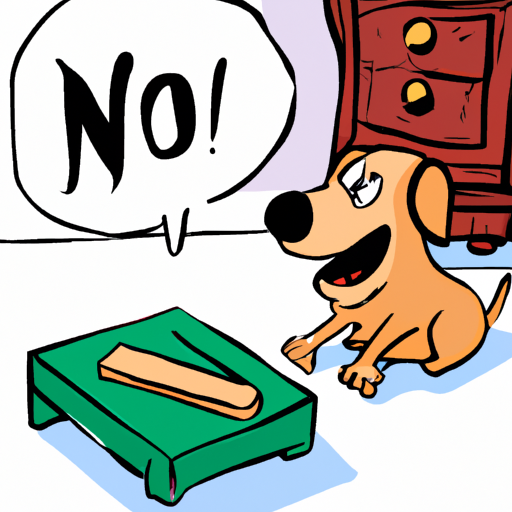As a caregiver, it’s your responsibility to ensure the well-being of your pet. When your adorable canine companion develops a penchant for gnawing at your wooden furniture, it’s not just your precious decor that’s at risk, but also their health. Here are some comprehensive strategies to help redirect your dog’s chewing habits.
1. Understand Why Dogs Chew on Wood
Your first step should be understanding why dogs chew on wood. This behaviour can be driven by various factors:
- Teething: Puppies chew to ease the discomfort of their new, growing teeth.
- Boredom: Dogs often chew to keep themselves entertained.
- Anxiety: Chewing can be a manifestation of stress or separation anxiety.
2. Provide Chewable Alternatives
One of the most effective ways to keep your dog away from wood is by providing them with suitable alternatives:
- Dog Chew Toys: These are specifically designed to withstand heavy chewing.
- Edible Chews: Things like bully sticks can keep your dog busy for hours.
- Interactive Toys: Toys that can be filled with treats can provide mental stimulation as well as a chewing outlet.
3. Use a Deterrent Spray
A deterrent spray can be a useful tool in your arsenal. These sprays have a bitter taste which discourages chewing:
| Product | Description |
|---|---|
| Bitter Apple Spray | This spray is non-toxic and safe for dogs, it leaves a bitter taste that most dogs dislike. |
| Anti-Chew Bitter Spray | Another harmless spray that deters dogs with its bitter taste. |
4. Train Your Dog
Training your dog is a more time-consuming solution, but it can be the most effective one in the long run. Some techniques include:
- Redirecting: When you catch your dog chewing, redirect them to an appropriate alternative.
- Positive Reinforcement: Praise and reward your dog when they chew on their toys instead of the wood.
5. Consult Your Veterinarian
If your dog’s chewing is persistent and severe, it could be a sign of an underlying health issue. In such cases, consulting a professional is recommended.
| Possible Health Issue | Description |
|---|---|
| Dental Problems | Pain from teeth or gum issues can lead your dog to chew. |
| Nutrient Deficiency | Some dogs chew objects as a result of a nutritional imbalance. |
Frequently Asked Questions
Q: Can chewing wood harm my dog?
A: Yes, chewing wood can cause splinters to lodge in the mouth or stomach, and may even lead to infections.
Q: How can I teach my dog what’s okay to chew and what’s not?
A: Consistency is key. Always redirect your dog to their chew toys when you catch them gnawing on wood, and remember to reward good behavior.
Q: Do I need to apply deterrent spray on all wooden surfaces?
A: Not necessarily. Start with the items your dog chews most frequently and observe their behavior.



